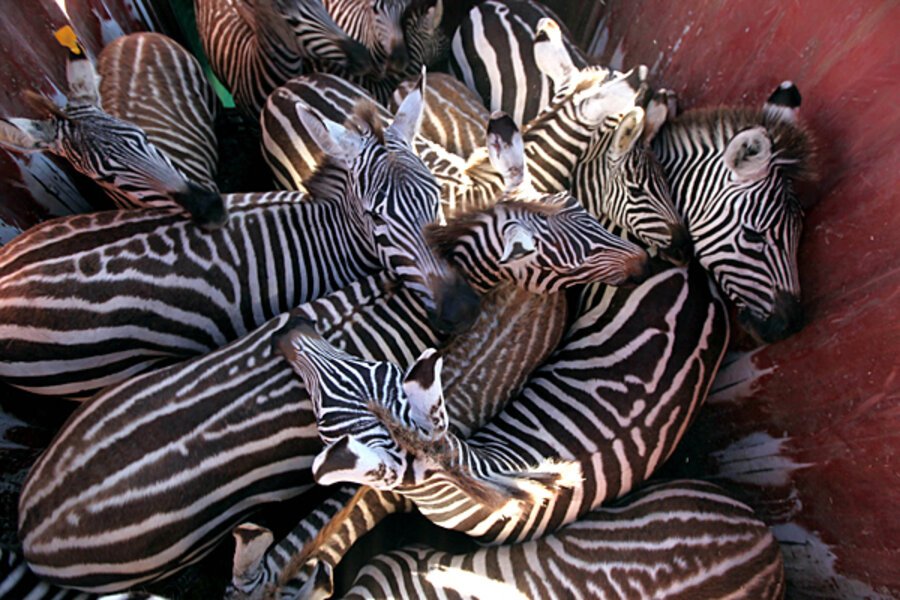Why is Kenya moving 7,000 zebras and wildebeest?
Loading...
| Boston
To feed hungry lions, Kenyan officials are spending $1.35 million to round up 4,000 zebras and 3,000 wildebeest and haul them across the country.
A drought last year in Amboseli National Park in the country's south killed off up to 60 percent of the park’s herbivore population, forcing lions and hyenas to look to local farmers’ livestock for food, reports Deutsche Presse Agentur (DPA) and the Associated Press (AP).
“The lions and hyenas lost their preferred food, which is mainly wildebeest and zebra, and of late have been raiding the local communities’ compounds,” Kenya Wildlife Service spokesman Paul Udoto told DPA.
Officials are taking the zebras and wildebeest from Soysambu Conservancy and three other locations. Senior scientist Charles Musyoki told the AP that they have already moved 137 zebras this week. He said a total of 4,000 zebras will be moved within three weeks. The wildebeests will take longer because many have calves or are about to give birth.
Tourism accounts for 25 percent of Kenya’s gross domestic product, and of that 70 percent is wildlife tourism. In the shadow of Mount Kilimanjaro, Amboseli National Park is one of the nation’s most popular parks. And while its tourist-attracting lions are endangered in Kenya, local villagers have been poisoning them as they began roaming outside of the park and feeding on livestock.
In Africa, animals are frequently relocated from places of glut to dearth. In 2000, South African officials airlifted 16 elephants from Johannesburg to Angola, shoving the portly pachyderms into one Russian Ilyushin cargo plane. It was one solution to a fairly common problem in Africa where certain animals can thrive in some parks while being virtually absent elsewhere.
The black rhino population, for instance, is thriving in South Africa to the point that some want to allow a resumption of hunting. But almost everywhere else in Africa, they remain endangered.
It's unclear if animal populations are even safer on wildlife parks. In 2009, the Monitor reported that populations of elephants, giraffes, and other wildlife inside Kenya’s national parks were declining at the same rate as animals living outside the parks – down 40 percent from 1977 to 1997.
-----
Follow us on Twitter.





